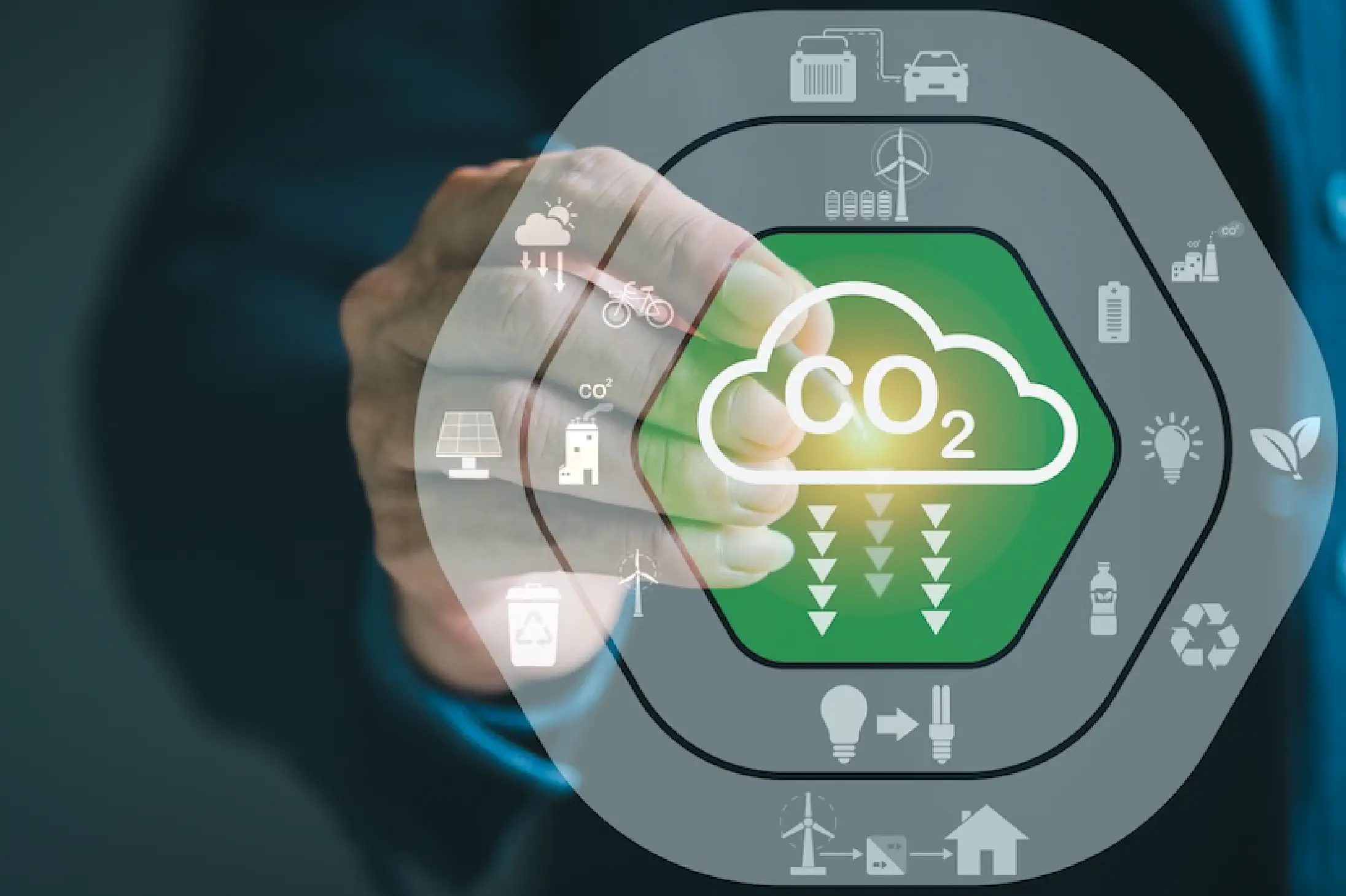Languages
24/7/2025

Sustainable logistics has become a priority: starting from January 1st 2025, European regulations impose stringent requirements for the measurement, reporting and communication of CO₂ emissions generated by the transportation of goods. The aim is climate neutrality by 2050, acccording to the European Green Deal.
In a context such as the Supply Chain sector, where demands for greater sustainability are increasingly insistent and European regulations (CSRD, EU ETS, Green Deal) are becoming stricter, it is essential to adopt advanced systems for measuring carbon footprint and reporting corporate green efforts.
CO2rate by Leviahub, together with the dedicated shipping and transport management software, represents the ideal solution to:
The Green Deal and European regulations demand a deep transformation: companies must demonstrate their carbon footprint with objective data, using certified tools such as CO2rate.
The combination of digitalisation and sustainable logistics is now a competitive lever and a means of regulatory compliance.
The CSRD (Corporate Sustainability Reporting Directive) has been transposed into Italian legislation by two Legislative Decrees, with the aim of standardising data for greater transparency and comparability of environmental performance:
The EU ETS (European Emissions Trading System), introduced in 2005, has been strengthened and amended in Italy by Legislative Decree No. 147 of 10 September 2024 to include new sectors such as maritime and road transport (via the ETS 2 Committee).
Accurate carbon footprint measurements are becoming indispensable for operating in a certified sustainable logistics context.
Calculating CO₂ emissions from transport becomes a fundamental tool to:
The calculation requires internationally recognised standards. Among them, ISO 14083:2023, the GHG Protocol, and the GLEC Framework are key references.
These rely on four fundamental principles: traceability, verifiability, transparency and repeatability of data (unique journey ID, loading and unloading locations, transport mode, vehicle type, cargo weight). The aim is to ensure accurate and certified carbon footprint measurements across the entire logistics chain.
Companies operating freight transport at scale must collect and transmit certified carbon footprint data to their clients, so that they can integrate it into their sustainability reports and comply with European environmental regulations.
CO2rate by Leviahub is an advanced tool for carbon footprint calculation, enabling companies to abandon manual methods in favour of integrated, certified digital solutions.
Integrating CO2rate, Leviahub’s CO₂ measurement software, into Supply Chain processes delivers significant competitive advantages:
The CO2rate carbon footprint calculation software ensures your transport company benefits from:
1. What new European regulations are affecting the freight transport sector in relation to CO₂ emissions?
Starting from January 1, 2025, companies operating in the freight transport sector will be subject to new European regulatory obligations. These obligations, part of the broader framework of EU climate policies aimed at achieving climate neutrality by 2050, concern the measurement, reporting, and disclosure of CO₂ emissions generated by transport activities.
These regulations are based on the Corporate Sustainability Reporting Directive (CSRD) and the enhancement of the EU Emissions Trading System (EU ETS). In Italy, the CSRD has been transposed into national law through Legislative Decrees No. 125 of September 6, 2024, and No. 147 of September 10, 2024.
2. What is the CSRD Directive and what are its main objectives?
The CSRD (Corporate Sustainability Reporting Directive) was adopted by the European Union in November 2022 with the aim of strengthening sustainability reporting obligations for companies. It represents an evolution of the previous Non-Financial Reporting Directive (NFRD), with the goal of increasing transparency and comparability of sustainability data and enhancing the quality of non-financial information made available to stakeholders.
The directive requires companies to measure and disclose greenhouse gas emissions, including CO₂, in accordance with GHG Protocol standards.
3. How are greenhouse gas emissions classified according to the GHG Protocol?
The GHG Protocol (Greenhouse Gas Protocol) is the most widely used international standard for measuring, managing, and reporting greenhouse gas emissions. It classifies emissions into three main categories:
4. What standards and calculation principles are required for CO₂ emissions measurement?
For the measurement of greenhouse gas emissions in transport, reference must be made to the ISO 14083:2023 standard. The fundamental principles that must be followed include:
6. What minimum data is required to calculate CO₂ emissions for each transport activity?
Each transport activity (shipment or trip) must be accompanied by a set of mandatory minimum data required for the calculation of CO₂ emissions, including:
7. How can companies comply with new carbon footprint calculation regulations and what tools are available?
Companies must implement IT and management systems capable of collecting shipment data, automatically calculating emissions and generating certified annual emission statements for clients.
Tools such as Leviahub’s CO2rate are designed for real-time CO₂ measurement, transparent data tracking, client certification and detailed ESG reporting – fully compliant with GHG, ISO 14083 and GLEC standards, surpassing the limitations of manual solutions.
Gestire il fascicolo doganale non deve più essere un incubo. Partecipa al webinar gratuito martedì 16 dicembre ore 14: con Nicola Savino e scopri come digitalizzare l’intero processo, ridurre il rischio di sanzioni e trasformare la complessità normativa in controllo totale.
I contratti cartacei rallentano le tue operazioni. Partecipa al webinar gratuito martedì 2 dicembre ore 10:00 con Nicola Savino e scopri come siglare accordi con fornitori e partner in 5 minuti, non in 5 giorni.
Leviahub presenta un approccio innovativo alla gestione del magazzino, dimostrando come tecnologia, metodo e controllo avanzato dei flussi possano trasformarlo in un vantaggio competitivo per le aziende.
Leviahub al GLM Summit 2025: la rivoluzione internazionale della Supply Chain è già iniziata, guidata da un modello innovativo che unisce tecnologia, consulenza e un ecosistema logistico in continua espansione.
Il DDT cartaceo rallenta la supply chain. Partecipa al webinar gratuito martedì 18 novembre ore 14:30 con Nicola Savino e scopri come trasformare la gestione documentale in un vantaggio competitivo.